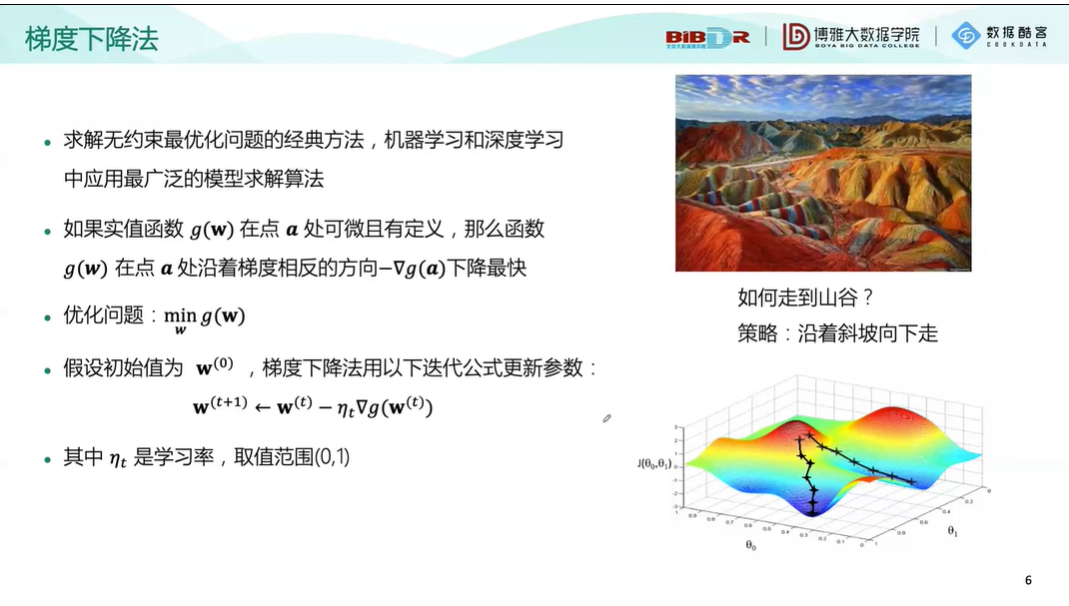机器学习十讲第三讲
本讲开始讲了梯度下降算法和最大似然估计算法。


from sklearn import datasets random_samples = datasets.make_classification(n_samples=60, #样本数量 n_classes=2, #类别数量 n_features=2, #特征数量 n_informative=2,#有信息特征数量 n_redundant=0, #冗余特征数量 n_repeated=0, # 重复特征数量 n_clusters_per_class=1, #每一类的簇数 flip_y=0, # 样本标签随机分配的比例 class_sep=3,#不同类别样本的分散程度 random_state=203) import pandas as pd data = pd.DataFrame(data=random_samples[0],columns=["x1","x2"]) data["label"] = random_samples[1] data["ones"] = 1 print(data.head()) data["label"] = data["label"].map({0:-1,1:1}) data_pos = data[data["label"]==1] data_neg = data[data["label"]==-1] import matplotlib.pyplot as plt import numpy as np w = [1,1,-4] x1 = np.linspace(-6,6,50) x2 = -(w[0]/w[1])*x1 - w[2]/w[1] plt.figure(figsize=(8,8)) plt.scatter(data_pos["x1"],data_pos["x2"],c="#E4007F",marker="^") plt.scatter(data_neg["x1"],data_neg["x2"],c="#007979",marker="o") plt.plot(x1,x2,c="gray") #画出分类直线 plt.xlabel("$x_1$") plt.ylabel("$x_2$") plt.xlim(-6,6) plt.ylim(1,5) plt.show()




